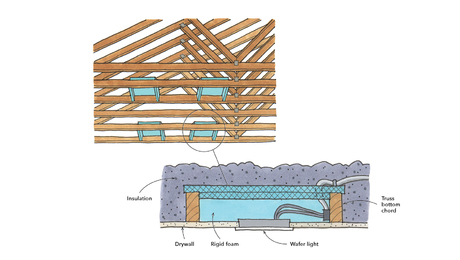What's the Difference: Spray polyurethane-foam insulation
Open cell and closed cell varieties have varying insulating qualities and applications
The rising cost of energy makes it easy to understand the growing popularity of spray-foam insulation. Filling a home’s walls and ceilings with expandable spray polyurethane-foam (SPF) insulation is an easy way of obtaining a tight, well-insulated envelope. Two types of spray-foam insulation are available: closed-cell and open-cell products. Each type of spray foam has varying insulating qualities and applications.
Open cell is vapor permeable
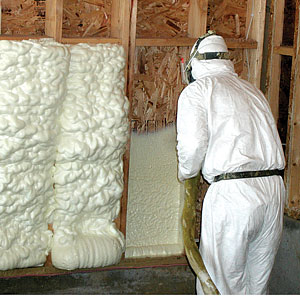
Open-cell foam expands 100 times its volume, which is much greater than the expansion rate of closed-cell foam. This means that less material needs to be applied to fill wall and ceiling cavities, which reduces costs and conserves resources.
However, the R-value of open-cell foam might not be great enough to offer code-compliant R-values when used in 2×4 walls.
Extra insulation could be needed even though studies have proved that open-cell foam works better than code-compliant batt-filled walls.
Open-cell foam, which uses water as its blowing agent and retains a consistent R-value, is vapor permeable, so it’s best used in wall and roof assemblies that need to be allowed to dry.
Unlike closed-cell foam, open-cell foam expands in the direction of least resistance, which makes it suitable for insulating existing walls without blowing out drywall and interior finishes.
Open-cell foam specs
R-value: 3.5 to 4 per in.
Density: 0.5 lb. per cu. ft.
Cost: 35¢ to 55¢ per bd. ft.
Closed-cell foam has a higher R-value
Closed-cell foam is denser than open-cell foam and has a higher R-value. It is also more rigid. Studies have proved that closed-cell foam adds shear and racking strength to wall assemblies, a benefit unattainable with open-cell foam. Closed-cell foam’s low perm rating means it is highly resistant to moisture absorption.
HCFCs (hydrochlorofluorocarbons) are no longer used as the blowing agent in closed-cell foam; a different non-ozone-depleting gas is. Off-gassing is an issue with closed-cell foam, and its initial R-value will diminish slightly over time.
Besides its use in walls and ceilings, closedcell foam is ideal for areas in which you want to stop moisture infiltration, such as basements and crawlspaces.
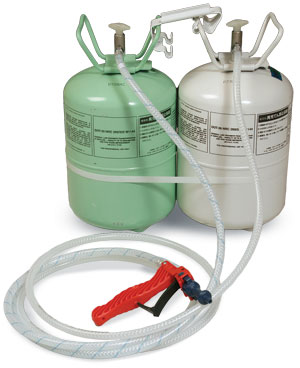
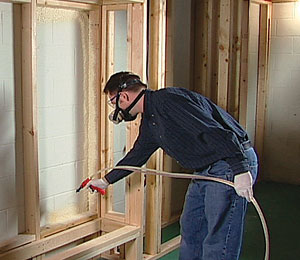
Closed-cell foam specs
R-value: 6.5 to 8 per in. (fresh); 5 to 6 per in. (aged)
Density: 2 lb. per cu. ft.
Cost: 90¢ to $1.25 per bd. ft.
Fine Homebuilding Recommended Products
Fine Homebuilding receives a commission for items purchased through links on this site, including Amazon Associates and other affiliate advertising programs.
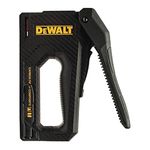
Staple Gun

Caulking Gun

Nitrile Work Gloves















